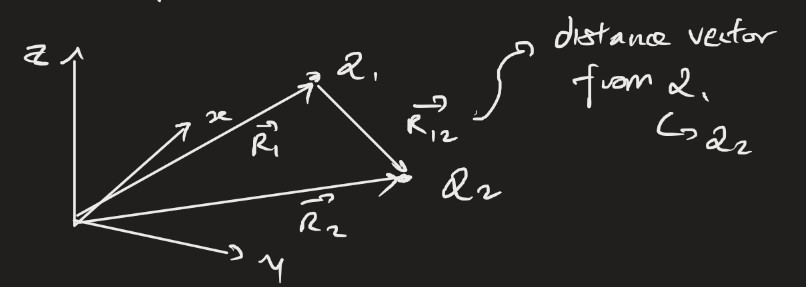In electromagnetism, Coulomb’s law describes the electrostatic force exerted by charged particles on each other. The direction of the force vectors depends on the sign of the charges. Recall: opposite charges attract, like charges repel.
where is the electrostatic constant, is the dielectric permittivity of free space, is the respective charge of each particle. The direction of the force is determined by the unit vector , which points from charge 1 to charge 2. The first and second statements of the law are equivalent, but the first is easier because it avoids a unit vector conversion.
The forces follow the principle of superposition. For a system of charges, we need to find all net force relations, i.e., for a system of three charges, we need three equations with two terms each.
We can relate to the electric field:
Calculations
A helpful representation is to give in terms of spherical coordinates:
where is the azimuthal angle (with respect to the -axis) and is the polar angle. Why spherical though? Because the electrostatic force is spherically symmetrical for all possible values of and , i.e., it only depends on the distance .
Formal statement
For two point charges and , we want to first define the distance vector between them. From the origin of the coordinate system, we define and . Then, is defined as the vector originating from pointing to .
 Then, the force from to is given by .
Then, the force from to is given by .
If we express in terms of the unit vector:
Substituting in will simplify the statement of the law, and prove that it’s still an inverse square law. Note the similarity to Newton’s law of gravitation.